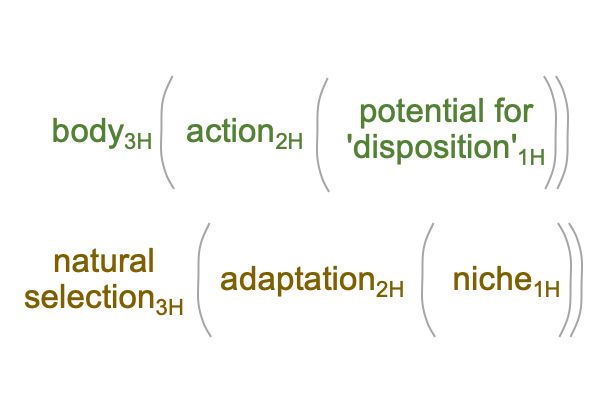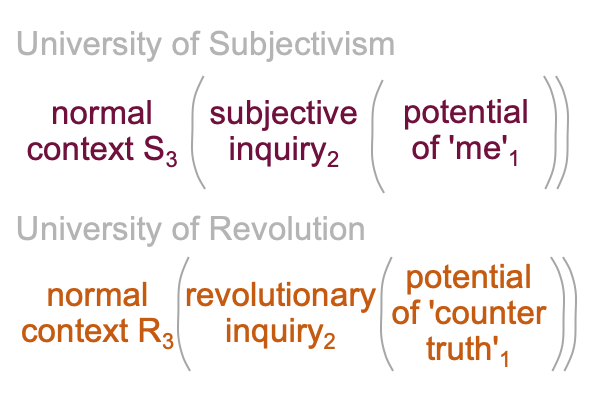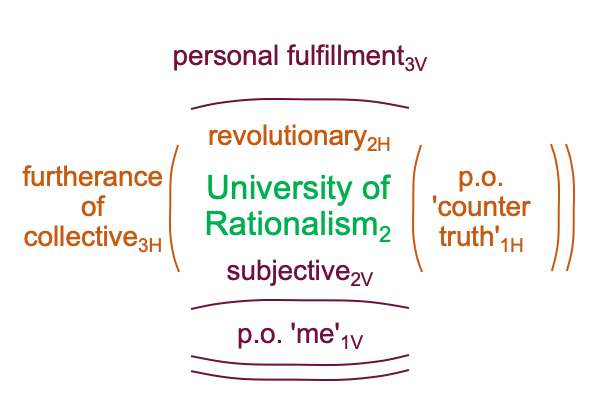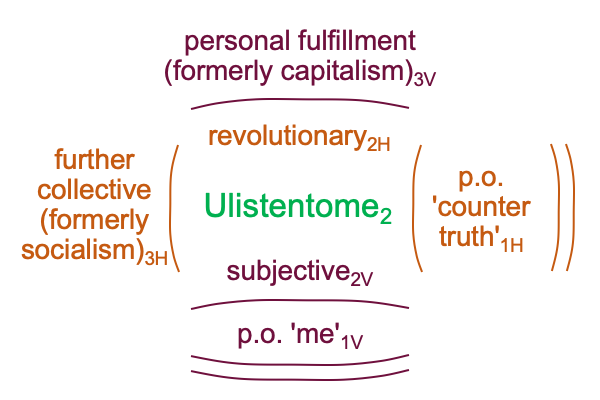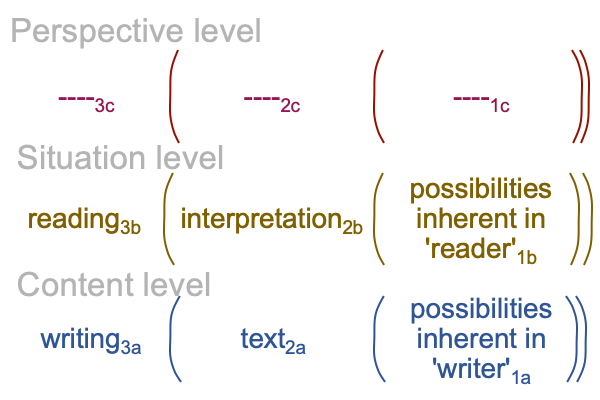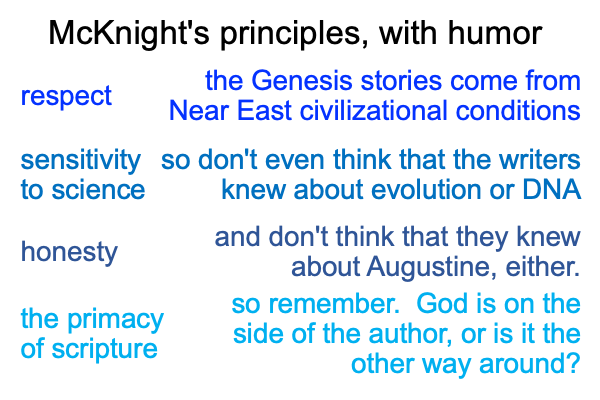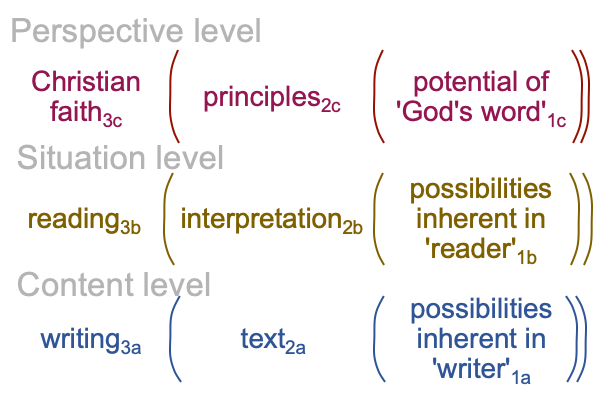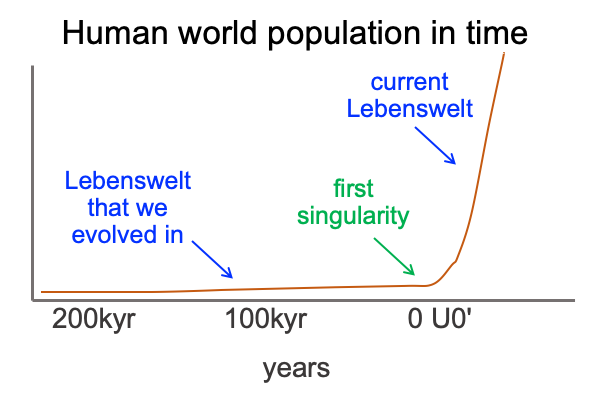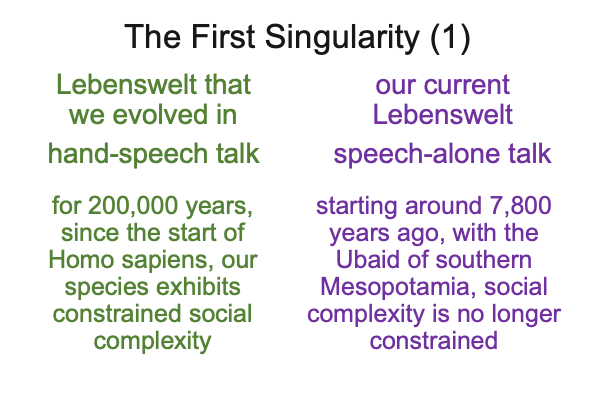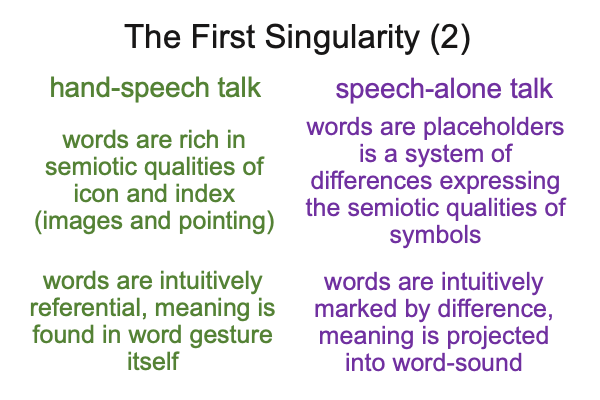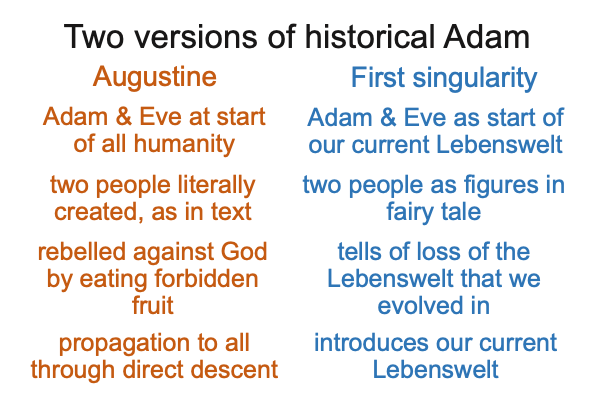Looking at Dennis Venema and Scot McKnight’s Book (2017) “Adam and the Genome” (Part 10 of 22)
0094 Furthermore, I can compare the intersection of what is good and what is evil with the message of descent with modification.
0095 For reading ease, here is the intersection at the heart of evolutionary biology.
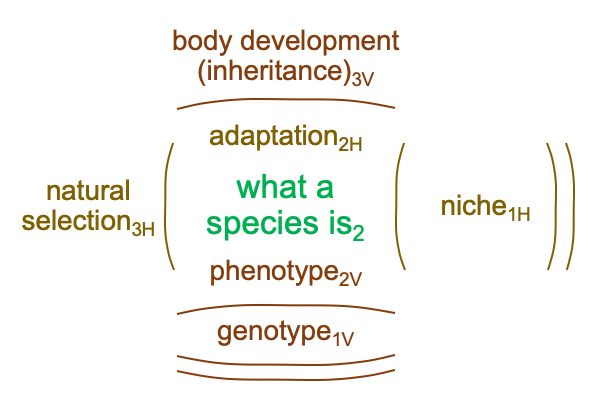
Note that the Latin word, species, means “kind”. A species can be an individual, a biological species, or a biological genus.
0096 Even though these two messages express vastly different content, they share the same mysterious relational structure.
0097 Is it creepy to think that what a species is shares the same relational structure as what is good and what is evil?
0098 It gets more creepy.
Look at the first chapter of Genesis.
Note how God’s thoughts are also actions.
Note how the six days express the creation of kinds in various ways.
0099 Now, let me consider the two intersections presented so far.
The elements compare (as allegories of one another) according to their locations in the intersection, leading to all sorts of suggestions.
0100 Let me start by comparing the normal contexts.
Natural selection3H is like body3H. Body development3V is like mind3V.
Can I say that another way?
Body development (and biological inheritance)3V as the normal context for the phenotype2V parallels mind3V as the normal context for thought2V.
Natural selection3H as the normal context for adaptation2H parallels the body3H as the normal context for action2H.
0101 What does this suggest?
Well, to start, the first comparison calls to mind the concept of intelligent design where ‘something thoughtful’ is contained in DNA2a. Okay, make that the genotype1V. DNA2a parallels what undergirds the phenotype2V. Phenotype2V parallels thought2V. Genotype1V parallels conscience1V. So, is there an actuality2a that undergirds conscience2V in the same way that DNA2a undergirds genotype1V?
Here is a comparison.
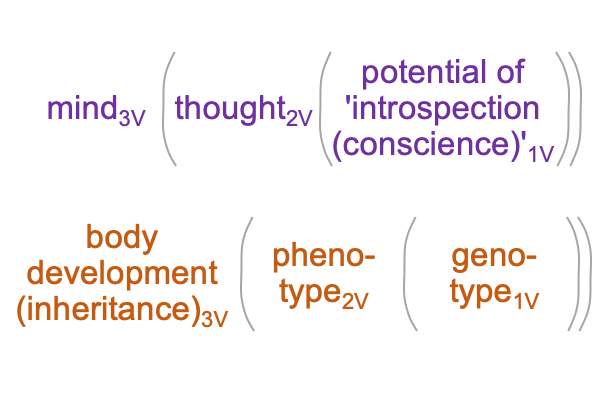
I know that the actuality underlying the genotype1V is DNA2a.
What about conscience1V?
0102 It makes me wonder.
What about modern scientific manipulations of animals and plants through selective breeding and now, genetic engineering?
The human body3H is the normal context where human actions2H perform operations that alter the DNA2a of living organisms3V.
If we were disembodied minds2V, would we do these things?
We stand in the place of gods3V when altering2H the genotypes1V of species.
Where is our conscience1V?
We cannot completely predict the body and behavior of the phenotypes2V that we potentiate1V. When unintended consequences occur, some3V will ask, “What were ‘we’ doing2H?”
But, ‘we’ does not include those of us who stand in the place of gods3V or have the power to ignore what is good and what is evil2 because ‘we’ were born3H that way3V.
0103 Shall I make another… hmmm… “thought provoking” comparison?
0104 Conscience1V compares to genotype1V.
0105 What does this parallel inspire me to imagine?
Let me ask, “Why do no other species that we observe engage in introspection?”
Well, what do we do when we engage in introspection?
Okay, we try to figure out what went wrong, among other things.
Do other animals introspect about what went wrong?
No, during an incident, an animal knows that something is going wrong. An animal learns from what happened. But, animals never seem to dwell (or introspect) on events in their lives.
It makes me wonder whether animals exhibit an intersection between thought2 and action2. Maybe, thought2b virtually situates action2a. Maybe, action2b situates thought2a.
It makes me wonder about what phenotypic structures2V are responsible for human thought2V.
It also makes me wonder whether something broke between the Lebenswelt that we evolved in and our current Lebenswelt.

